Get to know Blue Star Spring
Everyone wants to see Old Faithful erupt on their visit to Yellowstone. Before or after you watch this world-famous geyser erupt, know that there’s a short loop that takes you around Old Faithful. This easy walk takes you past one of the beautiful blue pools. In this post, I’ll go over information about Blue Star Spring that’s become an area to watch.
This post contains affiliate links. That means that if you follow a link and make a purchase, I receive a small
portion of that purchase at no extra cost to you.
WHERE IT’S LOCATED
Follow the large arch of benches to either side and follow the path that loops around behind Old Faithful (not the path that takes you down to the river). Following it, you’ll reach Blue Star Spring (and the Chinese Spring area).
HISTORY
In the early days of the park, long before it was known how fragile the thermal features are, this spring was used as a trash can for some of the early concessionaires in the park. Naturalist, George Marler decided in the late 1940s to start cleaning out the trash. He took an enormous amount from Blue Star Spring that was put on display for many years. His efforts have been continued by the park service. His study and observations of the hot springs and geysers formed a good basis for what we know now.
BEHAVIOR
Blue Star Spring has gently overflowed for a very long time. It shows us this in the thicker overhanging edges around it. Over on Heart Spring, you can see a very fragile thin edge that’s taken many years to form. The edge builds from the silica in the water in the same way a hard water deposit can form on a shower head. Here at Blue Star Spring, the edges that cover the spring shows the water level has been at this point for many decades, if not centuries. These ledges overhang the water 3-4 feet that best shows in the winter.
The book, The Geysers of Yellowstone tells us that this spring has rare 1 to 2-foot splashes. While for years Blue Star Spring has simply gently overflowed, in early May 2018, the water level rose high enough to overflow from other points on the “star” long enough for microbes to grow in those overflow channels. I shared this on Instagram (follow me for more updates when I head in in a few weeks).
Reports on Geyser Times said a flaming effect could be seen down by the vent. This means steam bubbles were trying to make it to the surface but collapsed by the weight of the water. The bubbles end up looking like a flame. This effect seen in other hot springs as well gave rise to the name Firehole. Soft thumps can also sometimes be heard near Blue Star Spring, but sometimes only down closer to East Chinaman Spring. It is unknown if this is connected, but that is a possibility. Thumps are thought to be the sound of bubbles collapsing.
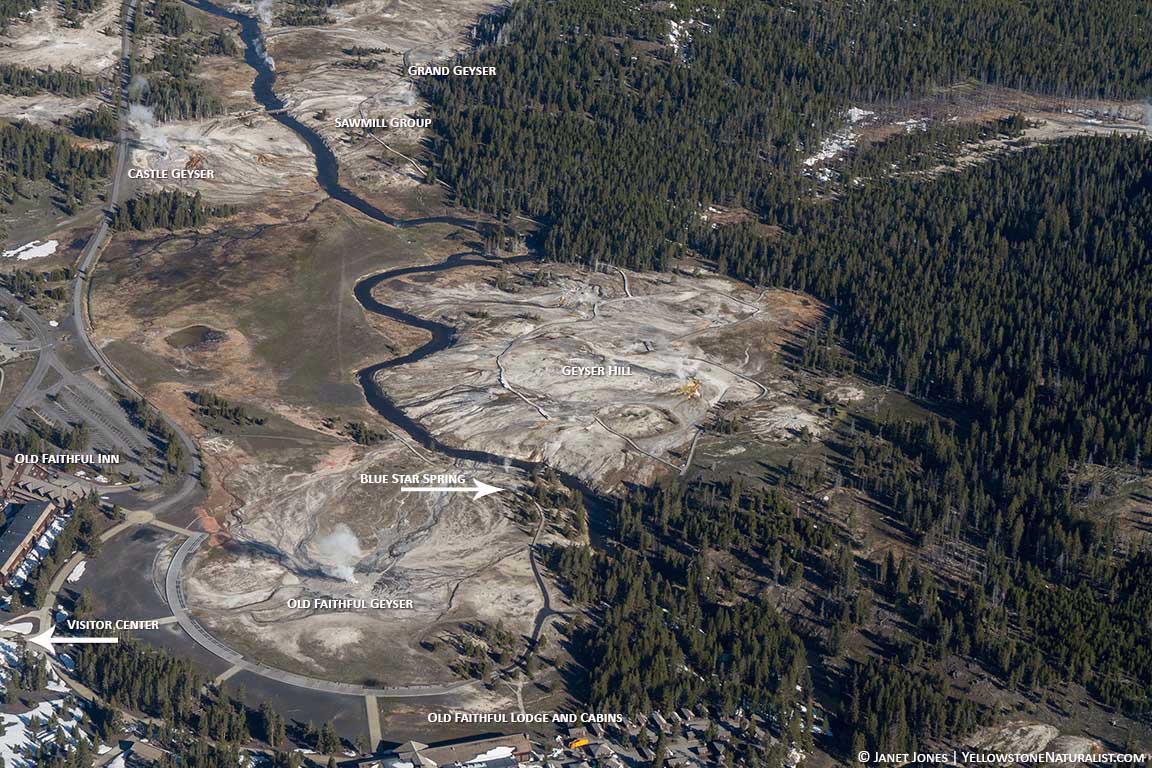
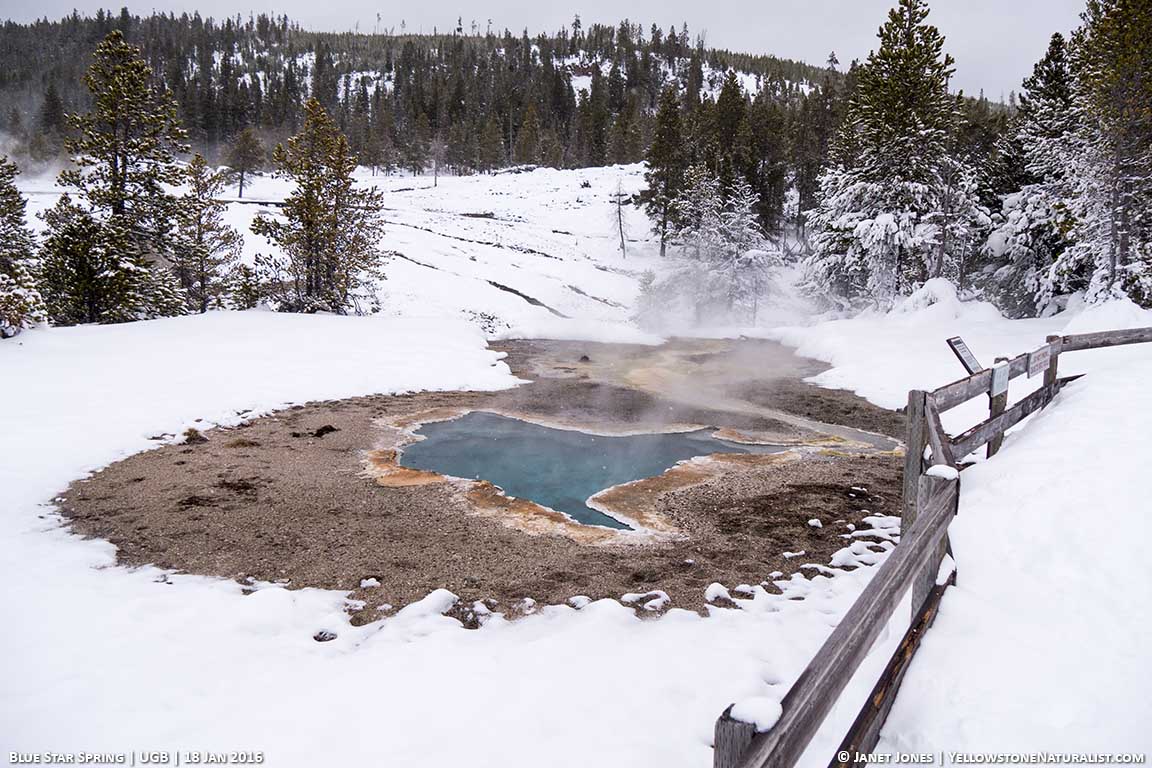
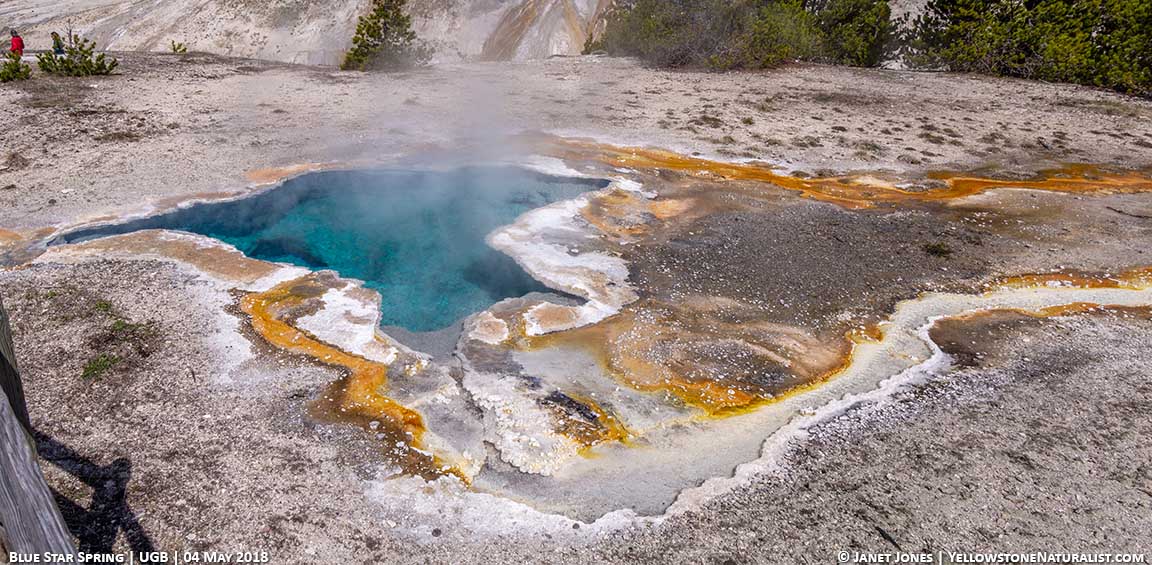
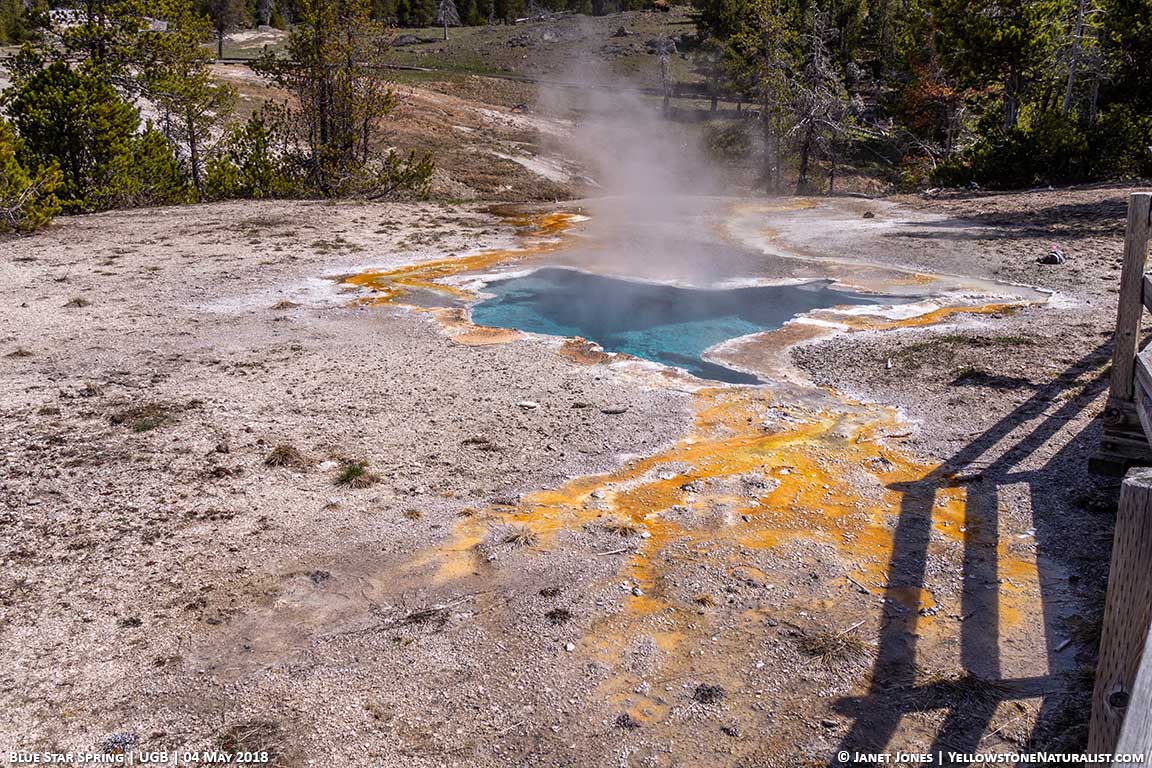
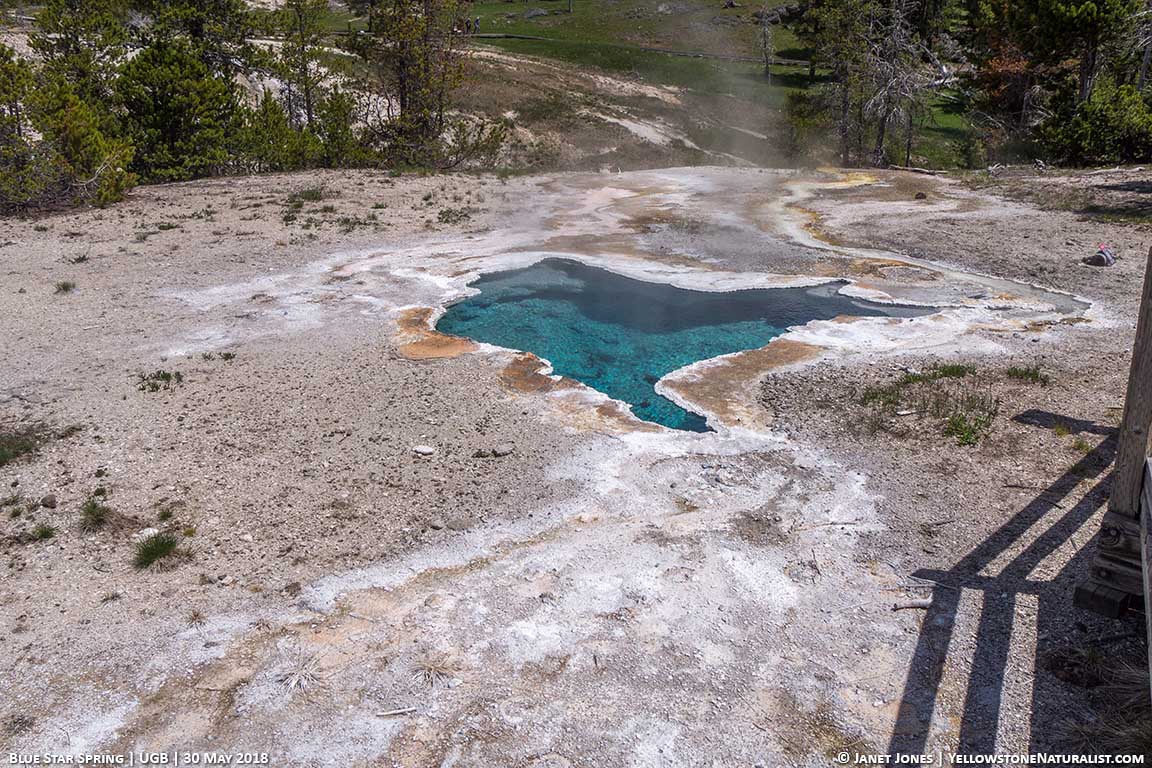
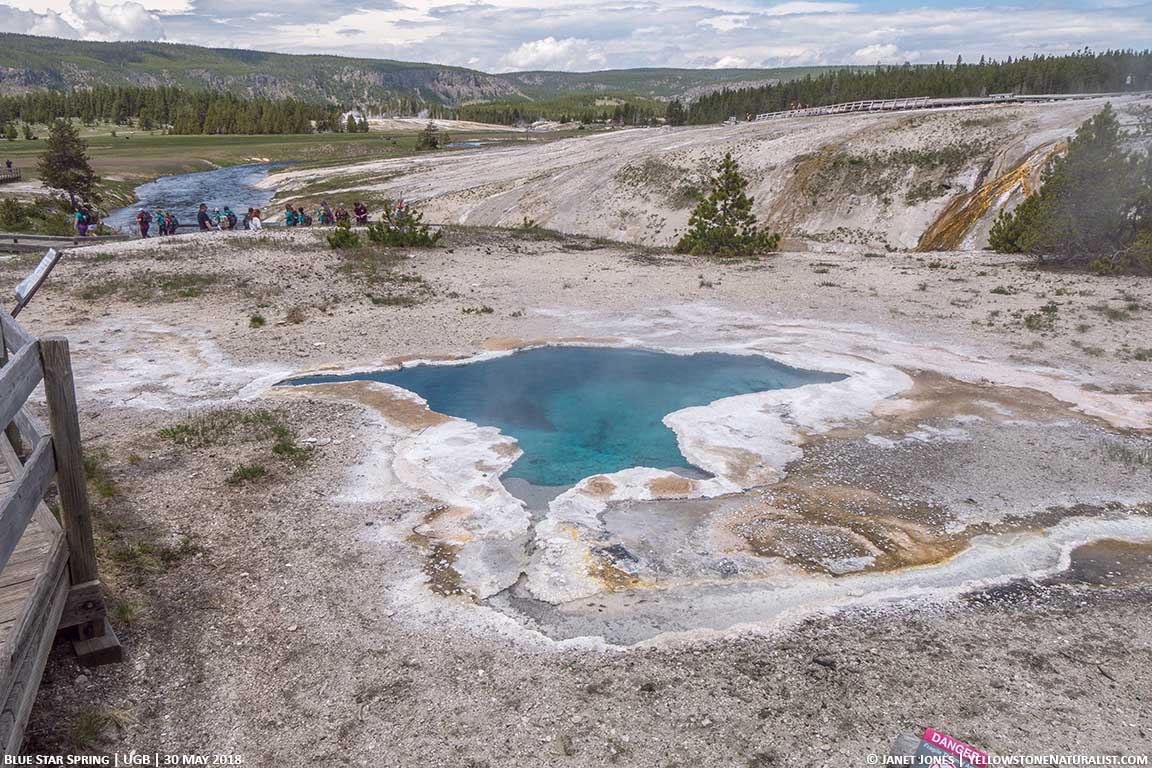
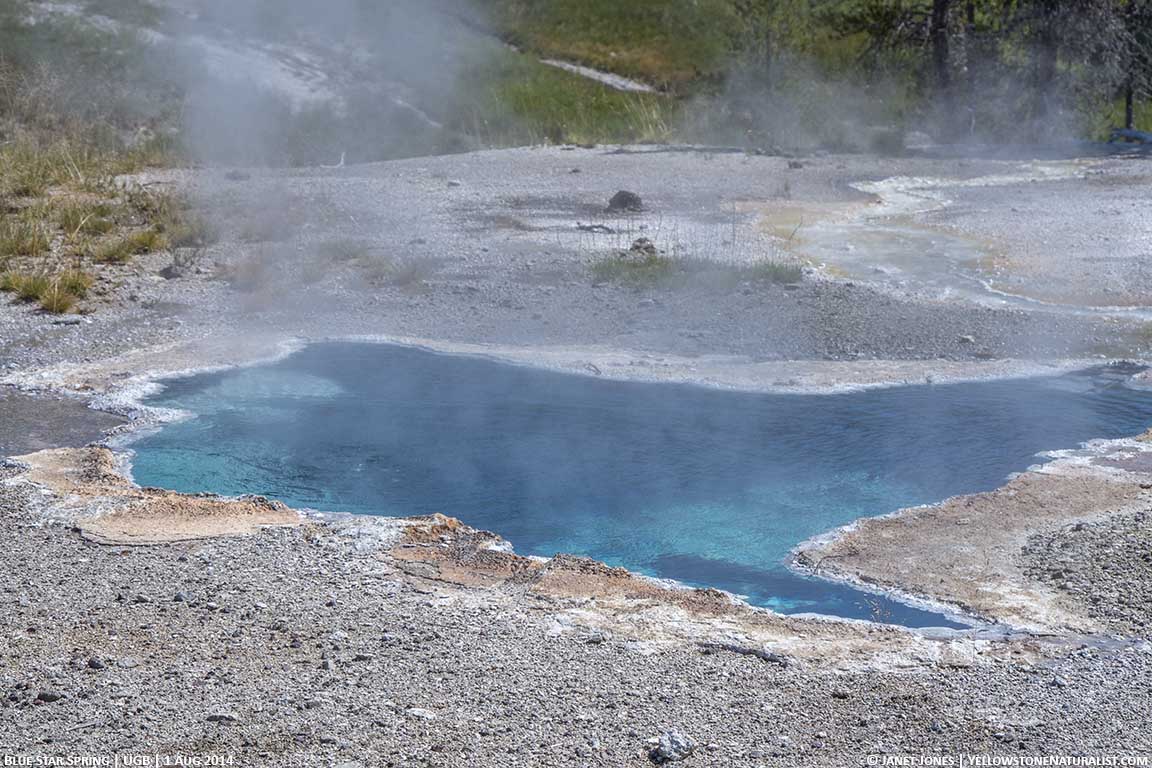
I wish I could see it I think the star would be awesome GOD MAKES BEAUTIFUL THINGS